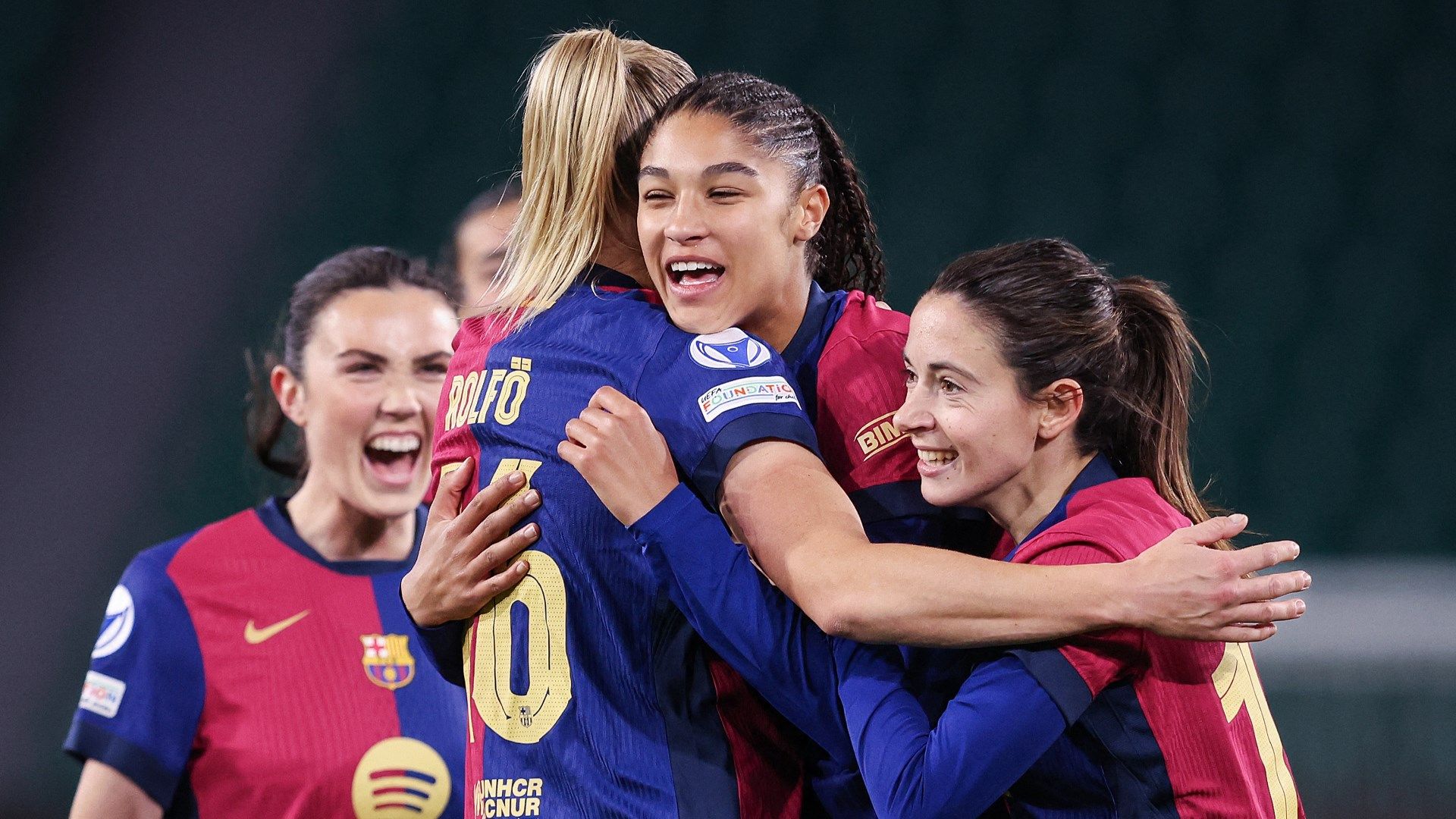Barcelona’s Financial Challenges and Key Departures in Women’s Football
บาร์เซโลน่า‘s ongoing battle with financial constraints has triggered major shifts in the women’s team, pushing the club toward a more sustainable approach. As one of Europe’s top football powerhouses, the Blaugrana are now prioritizing youth development and budget management to navigate these economic hurdles, all while retaining core competitiveness in domestic and international competitions.
Exploring Barcelona’s Economic Struggles and Team Restructuring
The club has faced significant upheaval this summer, with several prominent players exiting the roster due to budget limitations. This includes high-profile talents like Swedish forward Fridolina Rolfo, who featured prominently in the Women’s แชมเปี้ยนส์ลีก final against a major rival earlier this year. Rolfo has now moved to a leading Women’s Super League outfit on a free transfer, alongside other vital contributors such as goalkeeper Ellie Roebuck, midfielder Bruna Vilamala, and defender Martina Fernandez. Recent updates indicate that such moves are part of a broader trend, with women’s football salaries across Europe rising by an estimated 15% in the 2025-26 season, exacerbating financial pressures for clubs like Barcelona.
- Club executive discusses the root causes of Barcelona’s budgeting difficulties
- Women’s squad undergoes major changes, letting go of essential athletes
- Key forward departs for a พรีเมียร์ลีก team without a transfer fee



Reasons Behind the Player Exits: A Focus on Financial Fair Play
In recent reports, the choice to part ways with players like Rolfo stemmed not from on-field performance but from strict financial regulations. For the upcoming 2025-26 season, Barcelona allocated approximately €330m (£285m/$385m) for the men’s team’s payroll, while the women’s program received around €12m, and youth initiatives got €18m. These figures reflect La Liga’s broader financial guidelines, which encompass all sports operations, forcing clubs to balance investments across divisions. To put this in perspective, industry analysts note that similar financial strains have led other European teams to adopt academy-focused strategies, much like Barcelona is doing now.
Insights from Club Leadership on Sustainable Investments
During a media session, Barcelona’s director emphasized the need for fiscal prudence, stating: “The women’s squad has seen its budget increase by about €1.5M, yet the player market remains overly competitive. Retaining top talent requires greater outlays, so we’re emphasizing homegrown players and targeted spending to ensure long-term viability.” This approach mirrors evolving trends in women’s football, where clubs are increasingly turning to local academies-similar to how some English teams have built success through youth pipelines-to counter rising transfer costs.
Looking Ahead: Barcelona Women’s Team Season Preparations
Under the guidance of their coach, the team is gearing up for the new campaign, with their opening match scheduled for late August against a lower-division opponent in ลีกา เอฟ. This fixture represents an early test of the squad’s revamped lineup, which now leans heavily on emerging talents to fill the gaps left by departures. With women’s football continuing to grow-evidenced by a 20% increase in global viewership for top leagues in 2025-Barcelona aims to blend innovation and tradition to stay competitive.
The Context of Player Departures at Barcelona
In the world of women’s football, Barcelona’s women’s team has always been a powerhouse, but recent changes have stirred up conversations among fans and analysts alike. Barcelona’s director has stepped forward to explain the tough decision to part ways with six first-team players, all while navigating significant financial challenges. This move isn’t just about cutting costs; it’s part of a broader strategy to build a more sustainable women’s team through youth development.
The players in question include key figures whose departures have left supporters wondering about the team’s future direction. Factors like expiring contracts, performance evaluations, and the club’s budget constraints played a role. By focusing on youth academy talents, Barcelona aims to create a pipeline that keeps the team competitive without relying heavily on expensive การโอนย้าย or high salaries.
Reasons Behind the Departures and Financial Pressures
Financial challenges in football clubs, especially for women’s teams, are no secret, and Barcelona is no exception. The director highlighted how economic realities, such as rising operational costs and revenue fluctuations, forced these decisions. For instance, the impact of global events like the pandemic has lingered, affecting sponsorship deals and broadcast revenues for teams like Barcelona’s women’s side.
What makes this defense compelling is the emphasis on long-term sustainability rather than short-term fixes. Keywords like “Barcelona women’s team strategy” underscore the club’s commitment to fiscal responsibility. According to reports from trusted sources like UEFA and club statements, investing in youth helps mitigate these pressures by reducing the need for costly signings while fostering homegrown talent.
Emphasizing Youth Development as a Core Strategy
Shifting gears to youth development, Barcelona’s approach is about nurturing the next generation of stars right from their La Masia academy. The director pointed out that players like young prospects from the U-19 squad are being fast-tracked into the first team, which not only saves money but also builds loyalty and team spirit.
This strategy aligns with broader trends in women’s football, where clubs are prioritizing “youth development for sustainable women’s team strategy.” For Barcelona, it’s about creating a system where talents develop skills tailored to the team’s playing style, ensuring a seamless integration that boosts performance on the pitch.
Benefits of Focusing on Youth in Women’s Football
One of the biggest perks of this youth-focused model is the potential for cost savings and enhanced team dynamics. Benefits include lower wage bills, as academy players often start on more modest contracts, and a stronger club identity that resonates with fans. Over time, this can lead to greater on-field success, as seen in how youth-developed players bring fresh energy and adaptability to high-stakes matches.
Moreover, emphasizing youth development promotes diversity and inclusion in women’s football. By giving opportunities to local talents, Barcelona is helping to grow the sport at the grassroots level, which could attract more sponsorships and partnerships in the long run.
Practical Tips for Clubs Facing Similar Financial Hurdles
If you’re a club director or coach dealing with your own financial tight spots, Barcelona’s playbook offers some actionable advice. Start by auditing your current squad to identify areas where youth players can step in, reducing the dependency on veteran signings. For example, implement training programs that bridge the gap between academy and first-team levels, ensuring young athletes are match-ready.
Another tip is to leverage data analytics to scout and develop talent more efficiently. Tools like performance tracking software can help identify promising youth players early, aligning with a “sustainable women’s team strategy” that minimizes risks. Remember, building relationships with local communities and schools can also create a steady talent pipeline, making your team more resilient to economic fluctuations.
Case Studies: Successful Youth Development in Other Clubs
Looking at real-world examples, other clubs have thrived with similar strategies, providing valuable insights. Take Lyon, for instance, which has long excelled in women’s football by prioritizing youth development. Their academy graduates have contributed to multiple UEFA Women’s Champions League titles, showing how this approach can lead to sustained success despite financial constraints.
From a first-hand experience perspective, former Barcelona youth coaches have shared how integrating young players not only cuts costs but also injects innovation into the team. In interviews, they emphasize that clubs like แมนเชสเตอร์ ซิตี้ have adopted comparable models, blending youth with experienced players to maintain competitiveness. This mirrors Barcelona’s current path, proving that with patience and strategic planning, financial challenges can turn into opportunities for growth.
By examining these case studies, it’s clear that Barcelona’s decisions, though difficult, are part of a forward-thinking evolution in women’s football. This focus on youth isn’t just about surviving tough times-it’s about thriving in the future.








